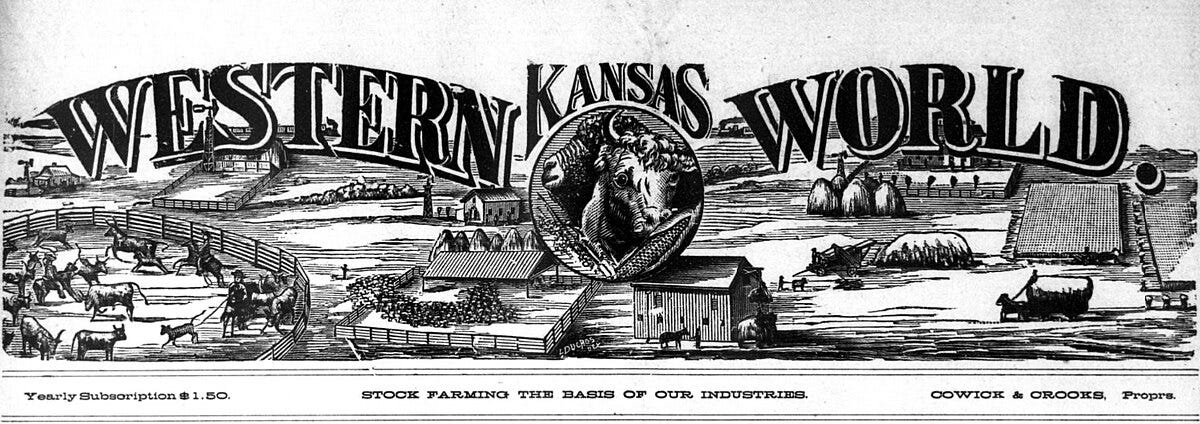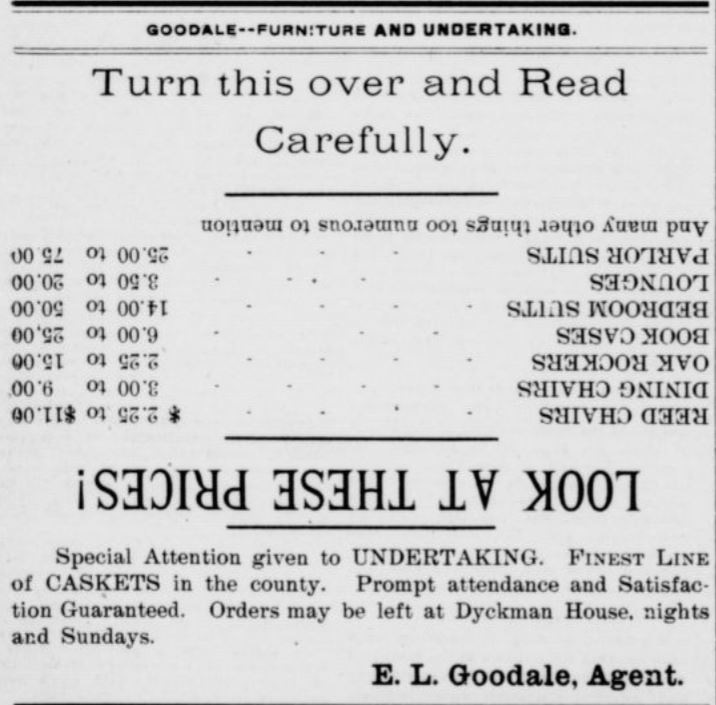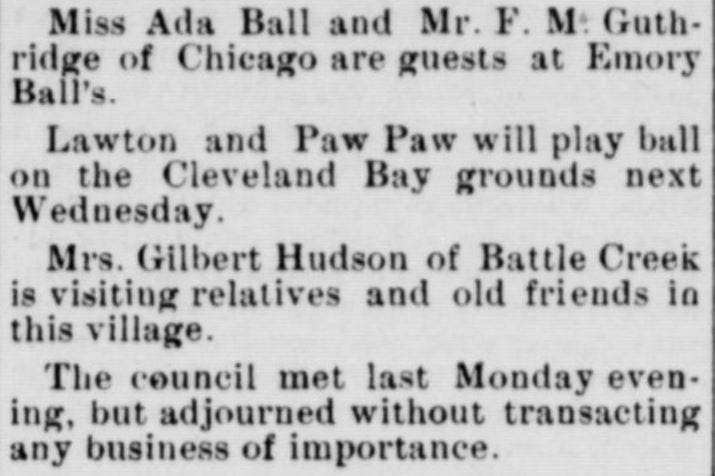19. Ever Wondered Where to Find Both Your Furniture and Your Coffin?
The transnational wire service and news of “marihuana” in the 1890s
Dear Readers,
Those of you of a certain age will remember an ancient technology called the “newspaper.” It was, appropriately enough, made of paper, it delivered the news, and was often brought to your home by a “paperboy” on a bike. And, if you are of a certain age, you probably knew your neighborhood’s paperboy. He was normally a kid from around the way. Maybe one of your friends from school. Maybe it was you yourself!

I once helped my friend Brian O. on his paper route delivering the Kalamazoo Gazette. We had to get up at what seemed like a completely indecent hour (c. 6am?) and ride around the dewy, summertime streets of Kalamazoo, Michigan’s Winchell neighborhood, whipping papers into people’s yards from baskets on the front of our bikes. Sounds kind of romantic now, though at the time I think my assessment was more along the lines of “this sucks.” Took me a few more years before I appreciated either the early morning or work.
For you youngsters out there, the newspaper used to be a big deal. In the days before 24-hour cable news or the internet, it was our portal to the world. This was how it was in the 1980s, but this was also how it had been in the United States for a very long time. Even way back in the nineteenth century, just about every little town in America had at least one newspaper that published at least once a day bringing in not only local happenings, but news from the rest of the world.
I just “surfed” over to the Library of Congress’s Chronicling America collection (do people still “surf” the internet? Even that nomenclature seems outdated at this point), and found 89 newspapers listed for Kalamazoo County alone. Now, not all of these old papers were dailies, and most of them aren’t yet digitized, but some of them are. For example, I opened up the Paw Paw (yes, that’s a real place) True Northerner, from nearby Van Buren County and discovered this gem of advertising innovation from August 1895:
An upside-down ad! Genius!
And once you spin your computer or phone around to read the ad, you’ll notice that it was possible to be in both the furniture and undertaking rackets at the same time! That’s pretty great. How come nobody does that anymore?
Though I’m guessing the furniture/undertaking combos were already going out of fashion by the 1890s. It was the Gilded Age, after all. Things were changing fast.
Newspapers brought that rapid change to ordinary folks every day. Though they also offered very mundane news. Just a couple of columns over from our undertaking/furniture ad there is this important information:
Now, if you’ve been following our admittedly winding story over the last few weeks, you may think I’ve finally flown way off course. After all, I was talking about marijuana in Mexico and now I’m talking about Mrs. Gilbert Hudson’s visit to her relatives in Paw Paw.
But actually, little newspapers like this one were crucial to the history of “marihuana” in the United States. Beginning in the 1890s, right around the time the excerpts above were printed, news of the drug began to filter into publications large and small throughout the United States, mixing seamlessly with the normal stuff about coffins and baseball games and uneventful meetings.
Key to this was the “wire service,” meaning news sent over telegraph lines, a technological innovation dating to the 1840s that helped to ensure not only that Americans all over the country were receiving news from around the world, but also that, thanks to the monopolization of wire-service content, they were reading many of the same stories, whether their paper was published in New York City or Paw Paw.
And, as a result, Mexican ideas about marijuana, and specifically the belief that marijuana caused madness and violence, began shaping the way that Americans understood weed, thus altering its historical trajectory and, really, the whole history of intoxicants in the twentieth century.
And we can date the moment when this process began with surprising specificity thanks to today’s technology (i.e. newspaper databases like Chronicling America): It was 1895, the same year that Goodale’s Furniture and Undertaking was selling its wares using upside-down ads!
But that’s enough of a nibble from the story for today. We’ll pick up here later this week. Enjoy your Monday.



